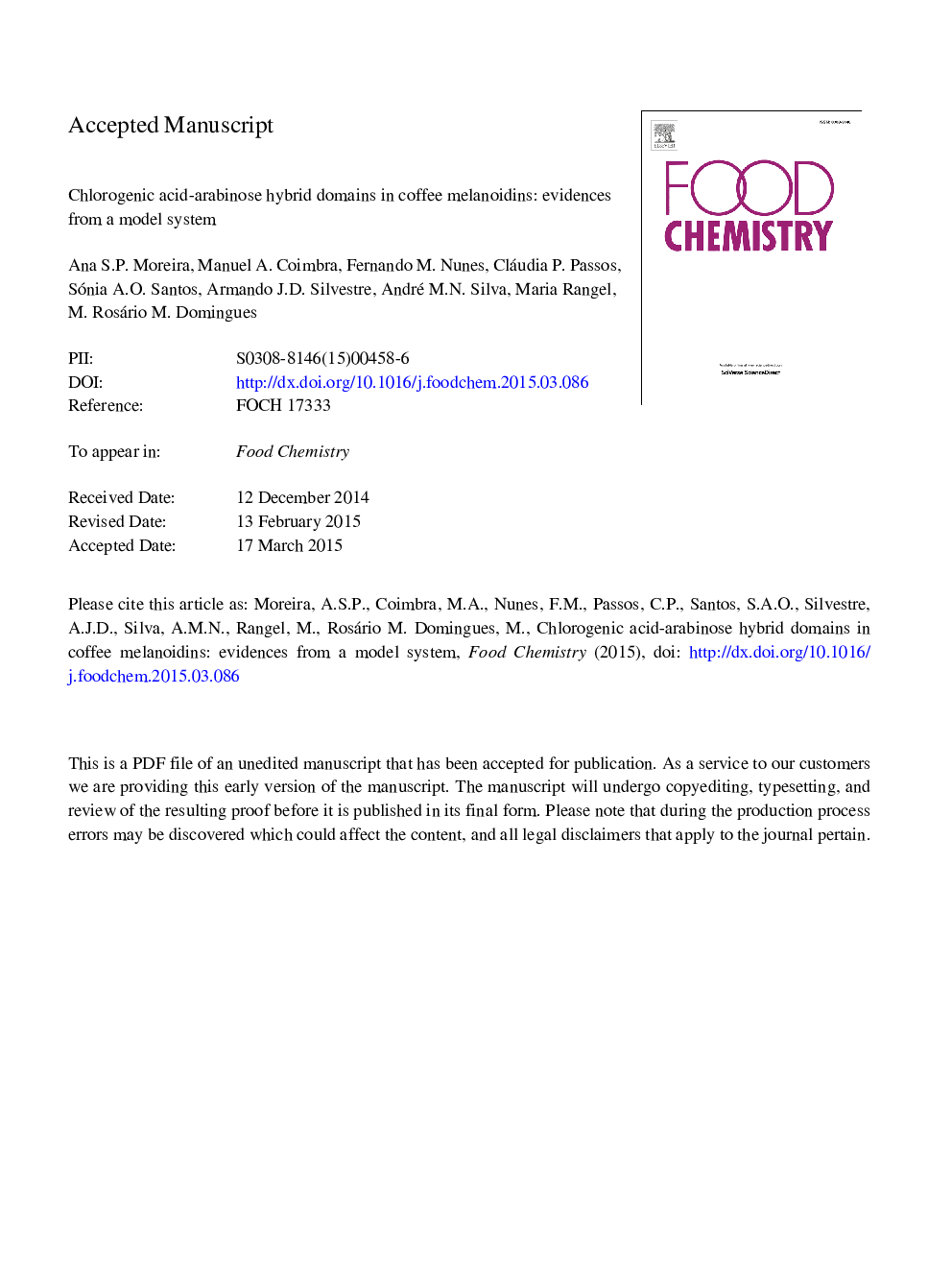| Article ID | Journal | Published Year | Pages | File Type |
|---|---|---|---|---|
| 7591409 | Food Chemistry | 2015 | 37 Pages |
Abstract
Arabinose from arabinogalactan side chains was hypothesized as a possible binding site for chlorogenic acids in coffee melanoidins. To investigate this hypothesis, a mixture of 5-O-caffeoylquinic acid (5-CQA), the most abundant chlorogenic acid in green coffee beans, and (α1 â 5)-l-arabinotriose, structurally related to arabinogalactan side chains, was submitted to dry thermal treatments. The compounds formed during thermal processing were identified by electrospray ionization mass spectrometry (ESI-MS) and characterized by tandem MS (ESI-MSn). Compounds composed by one or two CQAs covalently linked with pentose (Pent) residues (1-12) were identified, along with compounds bearing a sugar moiety but composed exclusively by the quinic or caffeic acid moiety of CQAs. The presence of isomers was demonstrated by liquid chromatography online coupled to ESI-MS and ESI-MSn. Pent1-2CQA were identified in coffee samples. These results give evidence for a diversity of chlorogenic acid-arabinose hybrids formed during roasting, opening new perspectives for their identification in melanoidin structures.
Keywords
Related Topics
Physical Sciences and Engineering
Chemistry
Analytical Chemistry
Authors
Ana S.P. Moreira, Manuel A. Coimbra, Fernando M. Nunes, Cláudia P. Passos, Sónia A.O. Santos, Armando J.D. Silvestre, André M.N. Silva, Maria Rangel, M. Rosário M. Domingues,
